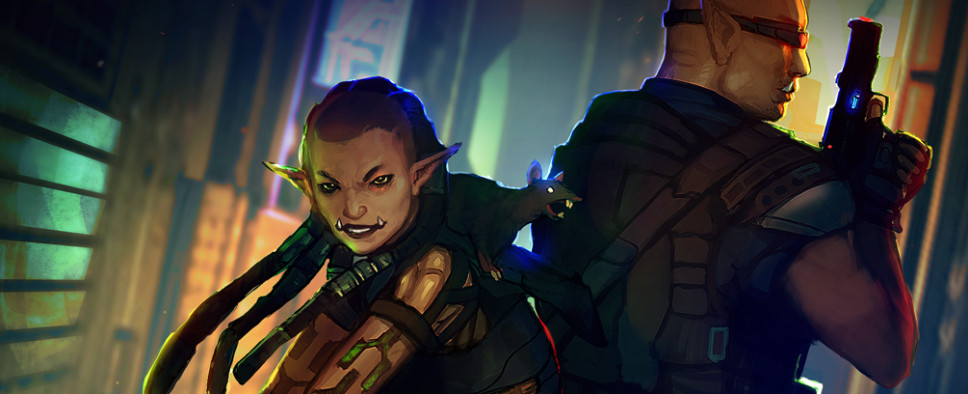Shadowrun: Hong Kong Review
-
Category: ReviewsHits: 17862

Article Index
Engine
Shadowrun: Hong Kong uses a fairly simple engine. The world is presented using an isometric view, and you use the left mouse button to do just about everything. While you're exploring a map, the game is played in real time, and you only select where you want your main character to move. Your companions just follow behind. Then when a fight breaks out, the game switches to turn-based mode, where you control your entire team on your turn, and then all of the enemies move on their turn, and so forth.
During combat, your characters get a certain number of action points to use (2 at the start of the game and then 3 later). Each point allows a character to move a short distance or perform an action (such as casting a spell or shooting a gun). Most actions only require 1 point, but some require 2, like the "full auto" rifle attack, which allows a character to shoot five times at a single target, but with reduced accuracy. If you have characters with leftover action points, then you can put them into "overwatch" mode, and they'll automatically attack enemies who come into range during the enemy turn.
The combat environment includes cover and dragon lines. Cover comes in three types (light, medium and heavy), and it reduces the amount of damage characters take. Moreover, characters who aren't protected by cover take flanking damage, which adds a 50% penalty. Dragon lines are used by spellcasters. They increase the amount of damage done by spells, and new in Shadowrun: Hong Kong, they also allow spells to "bounce" and hit multiple targets. Sadly -- or perhaps buggily -- spells can bounce into your allies and damage them, so you have to be careful who you target.
Campaign
The campaign that comes with Shadowrun: Hong Kong contains 15 missions. Early on, along with searching for your foster father, you also learn that "evil dreams" seem to be emanating from the Walled City near your base of operations, which was where your foster father was heading when he disappeared. So that gives you multiple areas to investigate, which leads to you having missions to collect books, steal research, kill monsters, kidnap rival crime bosses, and more.
Nicely, there are lots of ways to do things during the missions. For example, if you need to figure out the password for a terminal, you might hack into the terminal, charm or coerce somebody into telling you, or summon a spirit to give you the answer. That means you're free to take the crew of your choice on each mission. Plus, if you're not enthused by the talents of your companions, then you can hire shadowrunners instead.
About half the campaign takes place in the missions. The other half takes place in Heoi, where your base is located. In Heoi you can talk to people (including your companions), go shopping, and pick up new missions. In most games, the base part of the game doesn't take very long, but in Shadowrun: Hong Kong, each character you meet has a long history for you to uncover, and you might have 5-10 minute conversations with them after each mission. Since you can have up to five companions, and since there are 10 other NPCs for you to interact with, that means the between mission part of the game often takes longer than the missions -- until you get to the end of the campaign when people run out of things to say.
That is, Shadowrun: Hong Kong is a game for people who enjoy reading -- especially since nothing is voice-acted, so you actually have to read the dialogue rather than listening to it. The good news is that the writing is excellent. Characters have personalities, and it's fun to learn their backstories and motivations. The bad news is that while the conversations change a little based on your responses (and more than you usually see in an RPG), the trajectory of the conversations remains the same, and that hurts the replay value of the game. Playing Shadowrun: Hong Kong twice in a row is like reading a book twice in a row. You could do it, but it's far less exciting the second time around.

